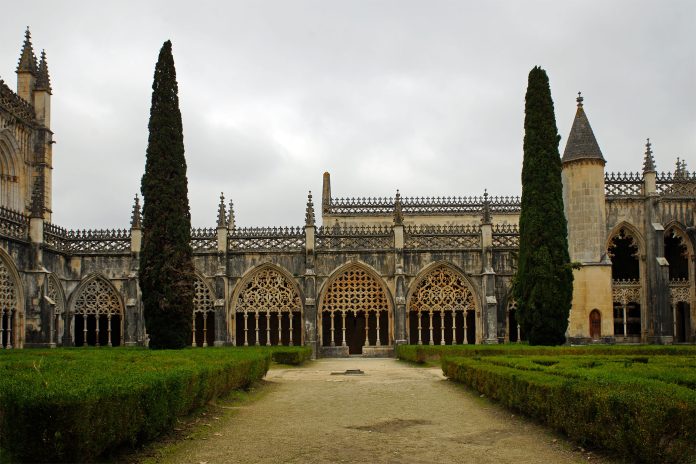In the charming town of Batalha, Portugal, stands a great symbol of Portuguese history: the Batalha Monastery, also known as Mosteiro de Santa Maria da Vitória. This grand monastery, with its captivating blend of architectural styles, has charmed visitors for centuries due to its rich history. Let’s take a look at the history behind the Monastery of Batalha, its architecture, and what you can expect when visiting.
History
The Batalha Monastery, also known as the Mosteiro de Santa Maria da Vitória, is a beautiful monastery gem located in Batalha, Portugal. Its rich history dates back to the 14th century when it was commissioned by King João I as a gesture of gratitude for the Portuguese victory in the Battle of Aljubarrota in 1385.
The building of the monastery spanned several centuries, with work continuing even after the death of King João I. The monastery complex was finally completed in the 16th century. The monks of the Dominican Order inhabited the monastery and dedicated themselves to prayer and worship.
Architecture
The design of the monastery harmoniously blends various styles of architecture. The construction of the monastery began in 1386 under the supervision of architect Afonso Domingues. It was initially built in the Gothic style, but over time, subsequent architects incorporated other architectural influences, resulting in a unique blend of styles, including Flamboyant Gothic, Manueline, and Renaissance.
The entrance to the monastery features a door adorned with intricate carvings depicting biblical scenes and figures. As you step inside, you’ll be greeted by an interior filled with soaring arches, ornate vaulted ceilings, and meticulously carved stone details.
The highlight of the monastery is the majestic Founder’s Chapel, also known as the Capelas Imperfeitas or Unfinished Chapels. This section of the monastery was originally intended to be a mausoleum for King João I and his successors. The chapel’s walls showcase breathtaking Manueline-style decorations, characterized by intricate stonework and delicate detailing.
Visiting Times & Tickets
Tickets to visit the Monastery cost €6. However, we recommend a ticket that includes the Convent of Christ and Alcobaça Monastery as well which costs €15. Students and seniors get a 50% discount.
The monastery is open between 9 am and 5:30 pm.


